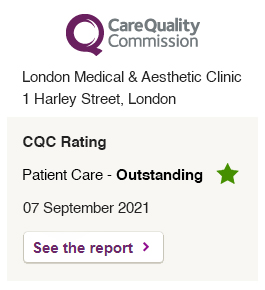
If you’re starting to explore options for adding volume, lifting your features or rejuvenating areas that look tired, you’ve probably noticed that the two most popular injectables are Sculptra and hyaluronic acid (HA) fillers. Both can transform your appearance, but they work in completely different ways and the results, longevity and ideal candidates vary far more than most people realise.
You might be wondering which option is best for natural volume, which lasts longer, which gives quicker results or which is more cost-effective in the long run. Or perhaps you’re trying simply to understand the difference between an immediate filler and a collagen-stimulating injectable.
In this article, I want to help you compare Sculptra and HA fillers side-by-side so you can feel confident choosing the treatment that matches your goals, your timeline and your aesthetic preferences.
What Exactly Are Hyaluronic Acid Fillers?
Hyaluronic acid (HA) fillers are gel-based injectables designed to replace lost volume instantly.
Key characteristics:
– Provide immediate plumping
– Hydrate the area by attracting water
– Come in different densities for different areas
– Common brands include Juvederm, Restylane and Teoxane
Hyaluronic acid is a substance your skin naturally contains, which is why these fillers blend quickly and feel soft once settled.
What Is Sculptra?
Sculptra is not a traditional filler. It’s a collagen stimulator made from poly-L-lactic acid (PLLA).
What this means:
– It doesn’t give instant volume
– It triggers your skin to produce new collagen
– Results appear gradually over weeks and months
– Results last much longer than HA fillers
Sculptra is often chosen for large areas of volume loss or for people who want a subtle, long-lasting and natural-looking improvement.
Key Differences at a Glance
Sculptra delivers results gradually because it works by stimulating your own collagen, while hyaluronic acid fillers provide immediate volume using a gel-based formula. Sculptra typically lasts around two to three years, whereas hyaluronic acid fillers last between six and eighteen months.
Sculptra is best suited for people wanting subtle, natural-looking volume that builds over time, while hyaluronic acid fillers are ideal for those who want quick enhancement. One of the biggest differences is reversibility Sculptra cannot be dissolved once injected, while hyaluronic acid fillers can be fully reversed with hyaluronidase if needed.
In terms of lift, Sculptra offers a soft, structural lift as collagen forms, whereas hyaluronic acid fillers can offer a more defined lift depending on the product used. Sculptra generally costs more upfront and usually requires two to three treatment sessions, while most hyaluronic acid filler treatments are completed in a single session with a lower initial cost.
How They Work: Instant Plump vs Collagen Stimulation

HA fillers: Immediate enhancement
When HA fillers are injected:
– The gel fills the area instantly
– Hydration increases
– Soft volume appears right away
This makes HA fillers ideal for people who want a quick refresh before an event or visible results immediately.
Sculptra: Slow-build transformation
Sculptra works very differently.
After injection:
1. The PLLA particles stimulate fibroblasts
2. Your skin begins producing new collagen
3. The collagen gradually restores volume
4. The results strengthen over several months
Sculptra reshapes the face from within, creating softer, long-lasting volume.
Longevity: Which Treatment Lasts Longer?
Sculptra duration: 2–3 years
Because Sculptra triggers collagen production, results continue to improve even after the initial course. Once the collagen is formed, it stays for years.
HA filler duration: 6–18 months
This depends on the:
– Brand
– Location
– Density of the filler
– Your metabolism
Areas like lips break down filler more quickly, while deeper fillers (e.g., tear trough, cheeks) may last longer.
Winner: Sculptra
If longevity is your main factor, Sculptra is far more durable.
Volume Quality: Soft vs Structured
HA fillers: Structured and precise
HA fillers give:
– Sharp contouring
– Visible lift
– Clear definition
– Immediate volume
Perfect for areas like:
– Cheeks
– Lips
– Jawline
– Chin
– Under-eyes (tear trough)
– Nasolabial folds
They allow fine sculpting and detailed results.
Sculptra: Soft and subtle volume
Sculptra produces:
– Gentle lift
– Softening of hollowness
– Overall rejuvenation
– Gradual face-smoothing
– Natural fullness
It’s ideal for:
– Temples
– Cheeks
– Jawline
– Marionette areas
– Overall mid-face hollowing
Sculptra is perfect if you want others to notice you look better, without being able to see what changed.
Cost Comparison: Upfront vs Long-Term Investment
HA fillers
– Lower upfront cost
– Shorter duration
– Long-term cost adds up
– Requires maintenance every 6–18 months
Sculptra
– Higher upfront cost
– Fewer sessions overall
– Results last up to 3 years
– More cost-effective long-term
Example comparison (approx):
HA filler:
£250–£450 per 1 ml
Repeat 1–2 times per year → £500–£900 yearly
Sculptra:
£350–£600 per vial
2–3 vials per course
Lasts 2–3 years → lower yearly cost overall
Winner: Sculptra (long-term)
Although Sculptra costs more upfront, you spend far less over several years.
Reversibility: Can You Undo the Treatment?
HA fillers: Fully reversible
If you experience:
– Overfilling
– Lumps
– Unevenness
– Change of heart
They can be dissolved with Hyaluronidase.
Sculptra: Not reversible
Once collagen develops, it cannot be dissolved.
This is why:
– Correct patient selection
– Proper injection technique
– Gradual treatment planning
are crucial.
Winner: HA fillers
If reversibility is important to you, HA fillers offer more flexibility.
Best Areas to Treat with Sculptra
Sculptra excels in areas requiring broad, natural volume:
– Temples
– Midface hollowing
– Cheeks
– Jawline definition
– Marionette lines
– Lower-face softening
– Overall skin quality improvement
It’s also used for:
– Buttocks (Sculptra butt lift)
– Hip dips
– Crepey skin on the body
Sculptra is ideal for large-scale rejuvenation.
Best Areas to Treat with HA Fillers
HA fillers are perfect where you want precise shaping:
– Lips
– Cheeks
– Tear troughs
– Jawline
– Chin
– Nasolabial folds
– Marionettes
– Nose reshaping (non-surgical rhinoplasty)
These areas require accuracy and structure that Sculptra cannot provide quickly.
Who Is Sculptra Best For?

You might prefer Sculptra if:
– You want long-lasting results
– You don’t want sudden changes
– You want overall facial rejuvenation
– You have deeper hollowing
– Your skin is thinning
– Your cheeks, temples or lower face feel sunken
– You prefer subtle, natural build-up
– You want collagen stimulation
Sculptra is especially beneficial for people experiencing age-related volume loss.
Who Are HA Fillers Best For?
You might prefer HA fillers if:
– You want instant results
– You want a sharper contour
– You want visible enhancement
– You prefer flexible, reversible options
– You want lip or under-eye treatment
– You have specific features to lift or sculpt
HA fillers are perfect for focused, precise improvements.
Treatment Experience: What Each Session Feels Like
HA fillers: Quick and easy
– Numbing cream optional
– Results visible immediately
– Treatment lasts 10–30 minutes
– Minimal downtime
Sculptra: Multi-step process
– Numbing cream often used
– Requires dilution
– Massage after treatment
– 2–3 sessions needed
– Results build gradually
– Downtime can include swelling or mild bruising
Sculptra feels more like a regenerative process rather than an immediate makeover.
How Long Until You See Results?
HA fillers: Instant
You walk out with visible changes.
Sculptra: Slow build
Results develop over:
– 4–6 weeks for early improvement
– 8–12 weeks for full volume
– 3–6 months for peak collagen formation
If you want a quick transformation, choose HA fillers. If you want natural evolution, choose Sculptra.
Risk Comparison
Both treatments are generally safe in the hands of trained professionals.
HA filler risks:
– Swelling
– Lumps
– Bruising
– Asymmetry
– Vascular complications (rare but serious)
– Overfilled appearance
Sculptra risks:
– Nodules (rare when diluted correctly)
– Bruising
– Swelling
– Itchiness
– Tenderness
– Temporary fullness
Sculptra requires a specialist familiar with collagen-stimulating injectables.
Skin Quality Improvements
HA fillers
– Smooth fine lines
– Improve hydration
– Plump specific areas
Sculptra
– Thickens the dermis
– Improves elasticity
– Enhances skin texture
– Reduces crepey skin
– Boosts firmness
Sculptra offers deeper, structural skin benefits.
Which Looks More Natural?
HA fillers: Natural when done well, obvious when overdone
They can look incredibly natural, but overfilling particularly in cheeks, lips or jawline can make results look artificial.
Sculptra: Always subtle and natural
Because it relies on your own collagen, the results blend seamlessly.
If you’re worried about looking “done”, Sculptra may be the safer choice.
Which Treatment Is Better for Anti-Ageing?
Early ageing signs: HA fillers
Great for:
– Mild to moderate volume loss
– Under-eye hollows
– Lip volume
– Cheek lift
Mid to advanced ageing: Sculptra
Ideal for:
– Generalised volume loss
– Tissue thinning
– Hollow temples
– Weak jawline
Sculptra rebuilds the foundation of youthful structure.
Combination Treatments: Many People Choose Both

You don’t have to pick one or the other.
Many people get the best results by combining:
– Sculptra for deep volume foundation
– HA fillers for detail and contour
For example:
- Sculptra to restore mid-face support
- HA filler to define the chin and jawline
This creates an incredibly natural yet sculpted transformation.
Frequently Asked Questions:
1. Is Sculptra or hyaluronic acid filler better for first-time patients?
If you’re getting injectables for the first time, hyaluronic acid fillers are usually the easier starting point because the results are immediate, predictable and fully reversible if you change your mind. Many first-time patients appreciate the ability to make small adjustments during follow-up visits. Sculptra, on the other hand, requires more patience because it works slowly and cannot be dissolved. It’s better suited for people who already understand their aesthetic preferences and are comfortable waiting weeks or months for the final outcome.
2. Does Sculptra look natural compared to HA fillers?
Sculptra generally looks incredibly natural because it relies on your own collagen to build volume gradually. This means the improvement becomes visible slowly, similar to the way your face might have looked a few years earlier. Hyaluronic acid fillers can also look very natural when used with the right technique, but they have a higher risk of appearing “done” or overfilled if too much product is added at once. If your top priority is subtlety, Sculptra often provides the softest and most blended result.
3. Which treatment is more painful Sculptra or HA filler?
Most people find both treatments tolerable, especially since numbing cream is usually applied beforehand. Hyaluronic acid fillers tend to feel slightly more comfortable because the treatment is quick and many filler formulations contain lidocaine, which provides extra numbing as the product is injected. Sculptra can feel a bit more noticeable since it requires more injection points and gentle massaging afterwards, but the discomfort is mild and short-lived. Most patients describe both treatments as manageable with minimal downtime.
4. How many sessions of Sculptra will I need?
Most people need between two and three sessions spaced several weeks apart to achieve full results. The number of sessions depends on how much volume has been lost, your skin thickness and your overall aesthetic goals. Unlike fillers, Sculptra works cumulatively, which means each session builds on the last one. Once full correction is achieved, maintenance treatments are usually only needed every 18–24 months, making it far less frequent than HA fillers.
5. Can I switch from HA fillers to Sculptra later?
Yes, it’s very common for people to start with hyaluronic acid fillers and later move to Sculptra once they want longer-lasting, more structural rejuvenation. You can transition easily once your current fillers have dissolved naturally. Many patients decide to switch when they notice they’re needing refills more often or want more global facial support rather than isolated contouring. It’s perfectly safe to move from HA fillers to Sculptra with proper timing and assessment.
6. Is Sculptra safe for all skin types and ages?
Sculptra is generally safe for a wide range of skin types and tones, and it works particularly well for people in their 30s and above who are experiencing noticeable thinning or hollowing. Younger patients can also use Sculptra, but it’s less common unless they have early volume loss from weight changes or genetics. People with autoimmune conditions, active infections or a history of keloids may need a personalised assessment before treatment. Your practitioner will determine whether you’re a good candidate.
7. Are the results from Sculptra guaranteed to last longer than HA fillers?
In most cases, yes. Sculptra’s collagen-stimulating effect naturally lasts much longer because your body is producing its own structural support rather than relying on a gel that gradually dissolves. However, longevity varies depending on your metabolism, lifestyle and the area being treated. Hyaluronic acid fillers can last a surprisingly long time in areas like the cheeks or tear troughs, but they generally do not match Sculptra’s two- to three-year durability. If long-term value matters most, Sculptra usually comes out ahead.
8. Will Sculptra make my face look puffy or swollen?
Temporary swelling is normal after a Sculptra session, but it settles within a few days. The early fullness you see immediately after treatment is mostly due to the water used to dilute the product and won’t reflect your final results. Once the swelling fades, your face usually looks unchanged until your collagen starts developing. Overfilling is extremely rare with Sculptra when it’s administered correctly because the product is placed deeply and builds volume slowly, giving a very natural appearance.
9. Can I get Sculptra and HA fillers on the same day?
In many cases, yes, as long as they’re used in different areas and for different purposes. Some practitioners treat foundational support with Sculptra and then use hyaluronic acid fillers for precise contouring in areas like the lips, chin or tear troughs. Whether you can receive both on the same day depends on your individual facial anatomy and the practitioner’s technique. Combining the treatments strategically can produce some of the most balanced, harmonious and natural-looking results.
10. Which treatment gives a more youthful appearance overall?
If you’re looking for a noticeable lift and overall rejuvenation of the face, Sculptra typically provides a deeper transformation because it restores the underlying support structure that declines with age. It strengthens the dermis, softens hollowness and improves skin firmness. Hyaluronic acid fillers, on the other hand, are excellent for targeted enhancements like lip volume, cheek shaping or under-eye brightening. The most youthful results often come from pairing the two: Sculptra to rebuild the foundation, and fillers to refine the contours.
Final Thought: Choosing the Right Injectable for You
Choosing between Sculptra and hyaluronic acid fillers ultimately comes down to your goals, your timeline and how subtle or immediate you want your results to be. If you prefer quick enhancement, sharper contours or the reassurance of a reversible treatment, HA fillers are an excellent option. But if you’re looking for a gradual, long-lasting and deeply natural rejuvenation that strengthens the skin from within, Sculptra often delivers a more transformative outcome over time.
Both treatments have their own strengths, and many people find that a combination of Sculptra for foundational volume and HA fillers for refinement gives the most balanced and youthful look. The key is choosing a treatment plan tailored to your anatomy and aesthetic preferences.
If you’re considering visiting a Sculptra clinic in London, you can contact us at the London Medical & Aesthetic Clinic to explore whether this collagen-boosting treatment is the right choice for your aesthetic goals.
References:
1. Oh, S., Lee, J.H., Kim, H.M., Batsukh, S., Sung, M.J., Lim, T.H., Lee, M.H., Son, K.H. & Byun, K. (2023) ‘Poly-L-Lactic Acid Fillers Improved Dermal Collagen Synthesis by Modulating M2 Macrophage Polarization in Aged Animal Skin’, Cells, 12(9), p. 1320. Available at: https://www.mdpi.com/2073-4409/12/9/1320
2. Master, M., Azizeddin, A. & Master, V. (2024) ‘Hyaluronic Acid Filler Longevity in the Mid-face: A Review of 33 Magnetic Resonance Imaging Studies’, Plastic and Reconstructive Surgery – Global Open, 12(7), e5934. Available at: https://www.ncbi.nlm.nih.gov/pmc/articles/PMC11250456/
3. Borrell, M., Chang, C., Fabi, S.G., Beleznay, K., Carruthers, J.D., Blitzer, A. & Narins, R. (2008) ‘Safety and Potential Complications of Facial Wrinkle Correction with Dermal Fillers: A Systematic Literature Review’, Plastic and Reconstructive Surgery, 121(5), pp. 1778–1789. Available at: https://www.ncbi.nlm.nih.gov/pmc/articles/PMC11766492/
4. Zhang, J., Li, X., Zhou, J. et al. (2023) ‘Efficacy and Safety of Poly-l-Lactic Acid for Correction of Midfacial Volume Loss: Results From a Prospective, Multicenter, Randomized Trial’, Journal of Cosmetic Dermatology. PubMed. Available at: https://pubmed.ncbi.nlm.nih.gov/40679154/
5. Li, Y., Akbar, S., Rundle,-Gillcott, D., Wright, S. & Donnelly, R.F. (2023) ‘Efficacy and Safety of Hyaluronic Acid Fillers for Midface Augmentation: A Systematic Review and Meta-Analysis’, Dermatologic Surgery. PubMed. Available at: https://pubmed.ncbi.nlm.nih.gov/41155810/





